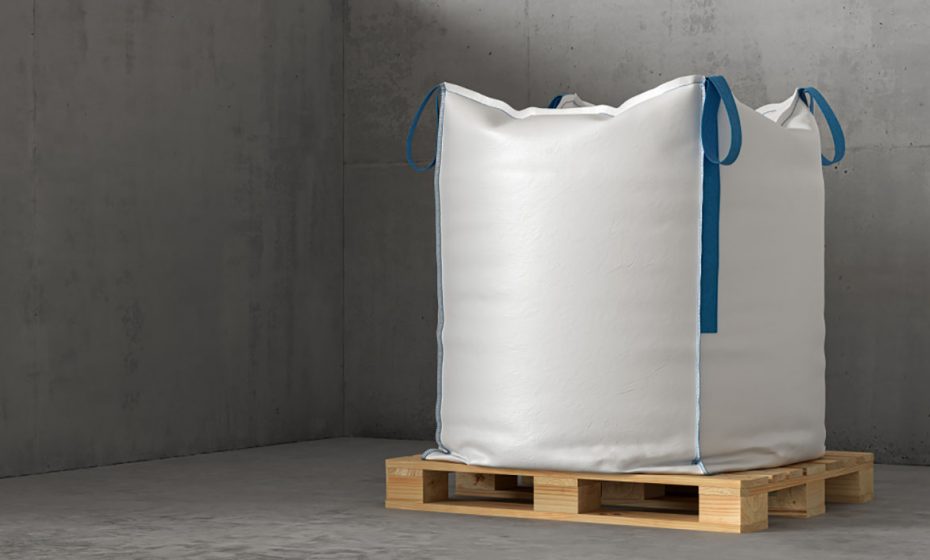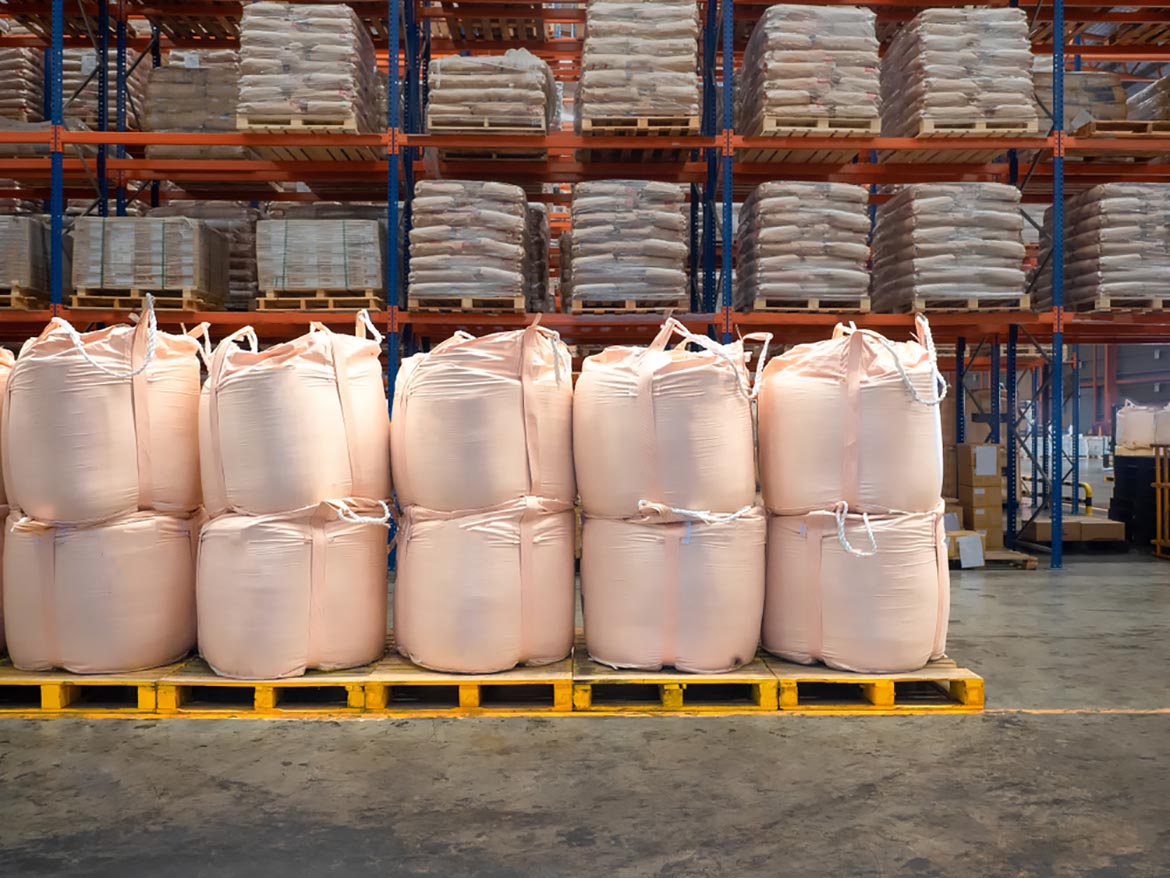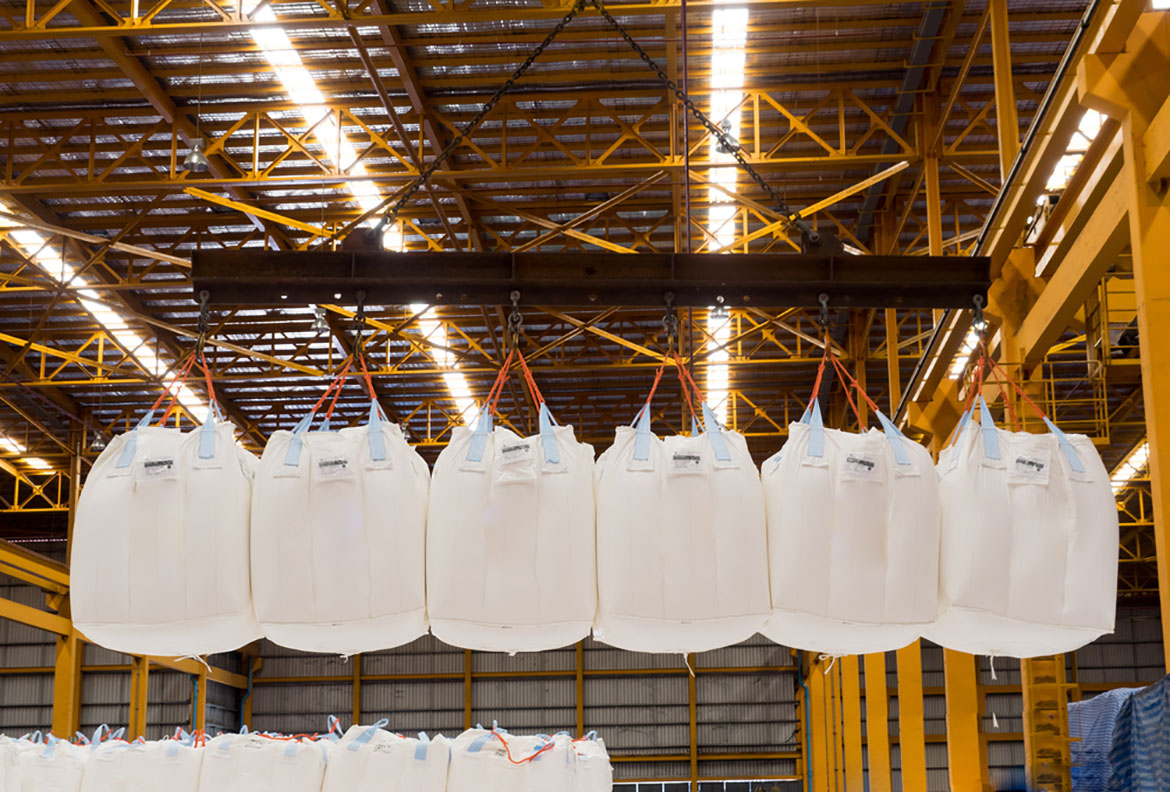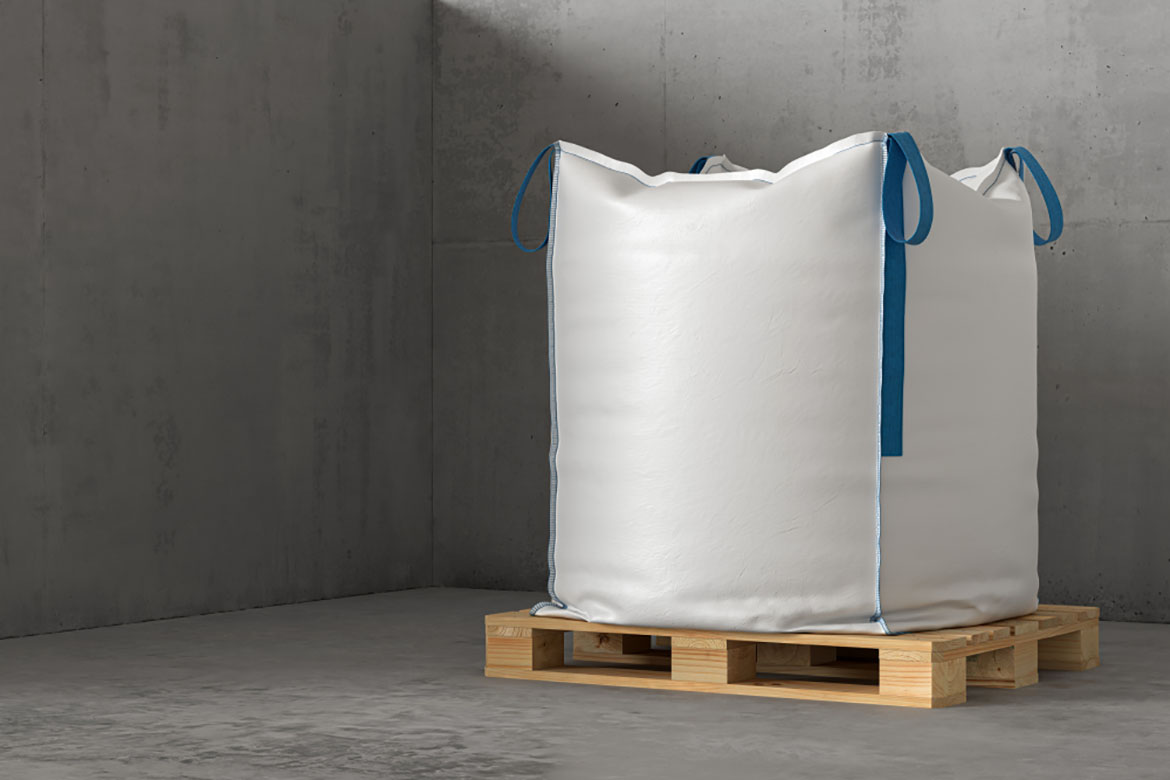Super sacks or bulk bags, technically known as flexible intermediate bulk containers (FIBC), are designed to store large quantities of dry goods and raw materials across a number of different industries. The bags are made of a plastic material that adheres to the exact shape of the contents. They can help you move as much inventory as possible in the shortest amount of time. Workers use lift trucks to safely move these bulk bags from one location to the next. They tend to be most popular with farmers, food processers, and distilleries. Learn about the different super sack sizes and how they are used.
How Big is a Bulk Bag?
Bulk bags come in a range of sizes, ranging from 35 to 80 inches in height, and 35-48 inches in width. Most bags come with a square base that’s designed to fit on top of a pallet. However, it will start to take on more of a cylindric shape as you fill it with materials. This makes it difficult to predict the exact dimensions of the bag when it is full. A completely full bag will usually come up to your waist when it is sitting on a pallet.
These bags can hold anywhere from 1,000 to 4,000 pounds. Larger bags usually come with handles on the top. Workers will then move them using a lift truck. The bag is supported by the handles as the person moves it from one location to the next.
Shop Super Sacks Online to Find the Right Size for Your Industry
How to Choose the Right Size for Your Industry
There are several factors to consider when choose a super sack for your facility. It all starts with deciding how you plan on moving and handling the bag when it is full.
If you plan on moving it with a pallet, you need to make sure the bag will fit onto the pallet without spilling over the sides. A standard pallet will fit a 35-inch bag, but the bag may expand when it is full. You should never try to move a super sack if it is larger than the pallet. If you are moving large quantities of dry goods, the bag will likely expand, so consider using a larger pallet to give yourself more room for safety. Keep the bag in the center of the pallet to keep it from falling over.
If the bag is too large for a standard pallet, you will have to move the bag using the handles. This is the best choice when moving large quantities of materials.
You can also use industrial wire baskets to transport your super sacks. They come with wheels on the bottom that make it easy to move around. Your workers can push the cart without using a lift truck for better workplace efficiency.
Consider the weight of your product as well. The pallet and lift truck should be able to support the weight of the bag. If you plan on using pallets to transport your goods, make sure the bag doesn’t surpass the pallet’s weight limitations.
Use FIBC Bulk Bags for Better Space Utilization
You should also consider how you plan on dispensing the product. If the contents of the bag need to be released in bulk, it may be better to transport the bag using the handles. This keeps the bag off the ground, so you can easily release the contents into a machine or storage container.
These bags should only be used to store loose, dry materials, such as flour, grain, animal feed, sand, fertilizer, and other industrial materials. They may not be the right choice for your industry.
If you would rather use a container with set dimensions, consider using wooden crates instead. They retain the same dimensions, so you don’t have to worry about the contents spilling over the side.
Regardless of what kind of container you use to store your products, keep track of your inventory using an automated warehouse system. This will help you monitor the flow of goods as they move through the supply chain. The program will also give you detailed information about the contents of the order, so you can find the right container as soon as it arrives.
Image Credits:
Mr. Amarin Jitnathum/Shutterstock.com
kbts/Shutterstock.com



